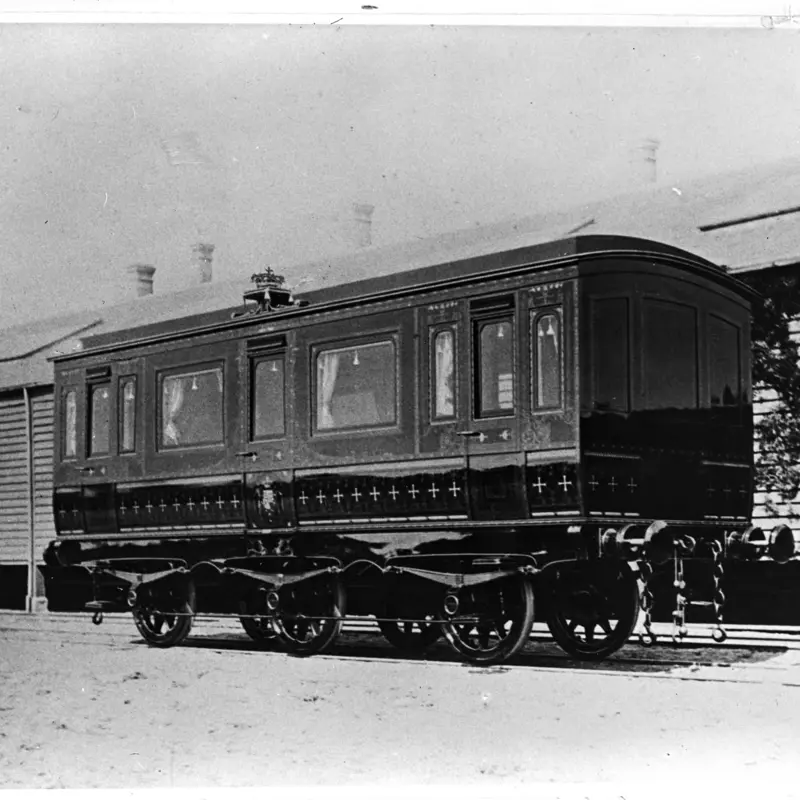
Since 1854, the Royal Family has had use rights for a number of successive saloon carriages, which have provided transportation around the country on the Danish rail network. The stories of the five royal saloon carriages are, at the same time, the stories of the best in construction and design of railway equipment since the mid-1800s until today.
The current saloon carriage was a gift to HM Queen Margrethe from DSB when Her Majesty turned 60 years old in 2000. The saloon carriage was ready for use the following year, and the 26.4-meter-long coach has been used since then when HM The King has traveled by train in Denmark.
The 50-ton saloon carriage is painted in a special reddish-brown color, which is called HM maroon (Her Majesty’s maroon). In addition to that, a power supply system is installed so that the carriage can travel around all of Europe with a top speed of 200 km/h. Inside, the Saloon Carriage is fitted with cherry-wood veneer on all of the walls as well as Danish design and artwork.
The first saloon carriage
In 1854, Frederik VII received a saloon carriage in connection with establishment of a new section of railroad track between the two German towns of Flensburg and Tönning. At the same time, it was the beginning of a transportation tradition in which the Royal Family rides in a saloon carriage when rail travel takes place. The first saloon carriage was called The Schleswig Royal Carriage and was driven around in Jutland until 1900. Afterwards, it functioned as an inspection carriage, and today it is exhibited at the Danish Railway Museum in Odense.

Christian IX’s saloon carriage
Since the first saloon carriage only ran in Jutland, Christian IX acquired a carriage in 1871 that would also travel on Zealand. Christian IX and the Royal Family primarily used the saloon carriage when they resided at Fredensborg Palace. There, in 1864, a train line was established to/from Copenhagen so that the Royal Family could travel to the palace by rail. This saloon carriage is also now exhibited in Odense.
The four-axle saloon carriage
It was a technically advanced saloon carriage that Scandia in Randers built for the Royal Family in 1900. In addition to being comfortable by the standards of the day and adorned with fine details, the 17-meter saloon carriage was also the longest train coach in Denmark at that time. In the 37 years that the Saloon Carriage traveled around on the Danish railways, it was among Christian X and Queen Alexandrine’s preferred means of transportation.
The modern saloon carriage
In the 1930s, for safety reasons, the development of train carriages transitioned from building carriage bodies of wood to now building them of steel. In this connection, DSB built a new saloon carriage in 1937, and it went into service on Christian X’s birthday on 26 September 1937. On the same day, the Storstrøm Bridge was also opening, and Christian X thus used the bridge and the Saloon Carriage for the first time on that day. At that time, the new saloon carriage was the longest train coach in Denmark at 23.5 meters. In addition to that, it was also made for travel in foreign lands out of consideration for, among other things, Christian X’s trips to the Riviera. The saloon carriage managed to serve three Danish monarchs, and, in 1983-84, it underwent an extensive technical renovation while, at the same time, having most of the furnishings replaced.